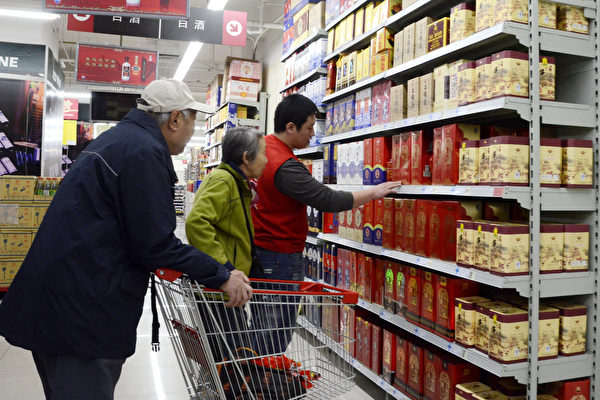The Chinese liquor market continues to stagnate, with distributors expressing concerns about the unusual price fluctuations this year. Some distributors have reported that the prices of liquor have become inverted, causing significant financial losses. Due to the unpredictable price changes, for example, providing a million yuan to a liquor company in exchange for products that are now valued at only 900,000 yuan, resulting in an estimated loss of 30 million yuan this year.
One liquor distributor, Zhao Zhao, who has been awarded prestigious recognitions by various well-known liquor brands, expressed to Phoenix Finance’s “Eye of the Storm” on November 14th that he expects to lose millions this year, without even factoring in operational costs. Despite previously being able to balance losses with gains, the situation now is one of overall losses. Zhao’s company, representing multiple renowned liquor brands, has been in operation for nearly 30 years and sees an annual revenue of hundreds of millions of yuan.
Another distributor with over a decade of experience, Zhang Guoqiang, who represents a well-known liquor brand, is also facing tough times, stating that “every day is a loss-making day.”
Zhang Guoqiang revealed to “Eye of the Storm” that providing funds to liquor companies is akin to rolling a snowball in the opposite direction. Initially paying 5 million yuan for products valued at the same amount in the market, subsequent payments see a decrease in product value, leading to an estimated loss exceeding 30 million yuan this year.
A survey by the China Alcoholic Drinks Association reveals that in the first half of 2025, over 50% of liquor distributors reported exacerbated price inversions, with over 40% facing cash flow pressures and 38.7% experiencing reduced returns.
Facing sustained market downturn, liquor companies are compelled to continuously reduce prices, adding pressure on distributors. Some distributors indicated that the market was already oversaturated, and manufacturers lowering prices only escalates the downward price spiral. Distributors who return funds early end up at a loss. While manufacturers understand this dilemma, they are unwilling to forgo price reductions, leading to a vicious cycle.
Multiple distributors attribute the current predicament to changes in consumer demand and industry chaos. Economic decline has prompted consumers to be more frugal with non-essential expenses like liquor. Younger demographics show less interest in liquor, while older consumers have weakened purchasing power, shifting from alcohol consumption to tea gatherings. Additionally, the diversification of alcoholic beverages, with low-alcohol drinks becoming more popular among the younger generation, contributes to the sluggish Chinese liquor market.
The downtrend in the Chinese liquor market is evident from the financial reports of the third quarter of this year. Among 20 listed liquor companies, apart from Guizhou Maotai and Shanxi Fenjiu, 18 companies reported a general decline in performance, with many seeing profit decreases of over ten percentage points and some experiencing a drastic decrease of over 90% in net profit.
On the evening of October 30th, leading Chinese liquor enterprise Yibin Wuliangye Co., Ltd. (Wuliangye) released its “Third Quarter Report 2025”, showing a decline in both operating income and net profit. The report revealed a decrease in revenue to 8.174 billion yuan, a 52.66% year-on-year decrease, and a net profit of 2.019 billion yuan, a 65.62% year-on-year decrease.
Furthermore, Yanghe Shares reported a 29.01% year-on-year decline in revenue in the third quarter, with a loss of 369 million yuan for the period, making it an uncommonly loss-making company among the top players in the industry. Yilite saw a net profit decrease of 158.52% year-on-year, Shunxin Agriculture’s net profit dropped by 136.75%, Gujing Gong Jiu by 74.56, Kouzi Cellar by 92.55%, Jinzhongzi Liquor by 74.42 with a loss of 100 million yuan, Shuijingfang by 75.01%, Jiugui Liquor by 70.93%, Laobaigan Liquor by 68.78%, and Shedao Wine Industry by 63.18%. All of them experienced a decline of over 60%.

